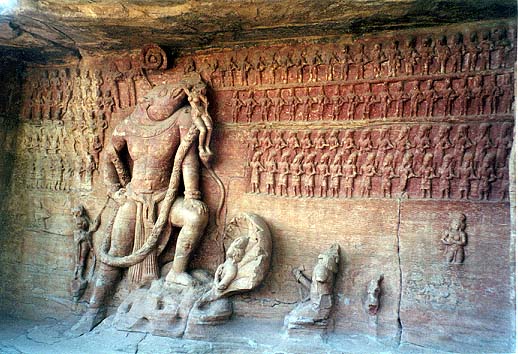
Varaha
Gupta, Early 5th century AD
Cave 5, Udayagiri, Madhya Pradesh, India.

|
VarahaGupta, Early 5th century AD
|
This large (4m, or 13 feet, high) relief sculpture is one of the icons of Indian art. It is carved into a shallow niche and protected by an overhang, but is otherwise open to the outside, where there was originally a water tank.
The relief depicts Varaha, the boar incarnation of Vishnu, rescuing the Earth Goddess (Bhu Devi, also called Prithvi) from the engulfing Ocean. Varaha lifts Bhu Devi on his massive shoulder, his foot subduing a naga who folds his hands in submission and adoration, while gods and sages surround Varaha in recognition of the miracle. A circular lotus flower appears above the god's head.
Technically this image is called a nara-varaha, or man-boar, since it has a man's body and a boar's head. The relief may have a political meaning in addition to the mythological one; it is said to be an allegory of the unification of India under Chandragupta II.

|

|

|